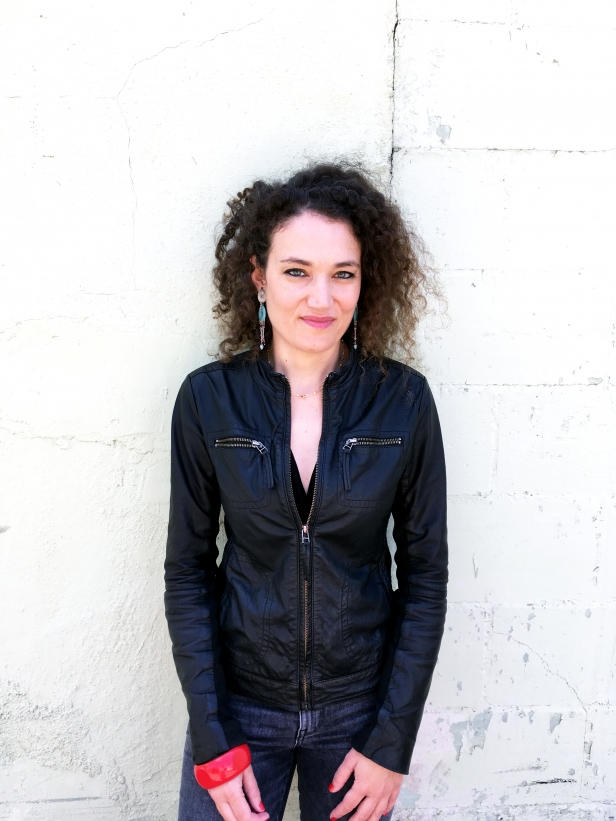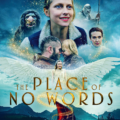With the release of the exceptional vengeance horror Revenge coming to limited edition Blu-ray by Second Sight Films, we spoke to writer and director Coralie Fargeat about the movie and much more…
How did you get the idea for Revenge?
The very first idea was around the main character, Jen. I wanted to explore the very strong figure of the Lolita – the blonde sexy girl who is seen by the guys like the eighth wonder of the world [laughs] but as soon as she starts to be a problem for them, they think they can erase her from the earth as if she is nothing.
Women can be seen or be treated in a lot of different ways and I really wanted to explore this idea. [I wanted to combine this] with a genre film because this is the kind of cinema I like. Genre is a great vehicle to be able to go very far in this take. When I started to write the script, the desert came as an idea to keep the film’s [budget low]. I knew as a first feature I couldn’t have a big budget so it was a perfect way to have a very visual and strong location that immediately takes you somewhere else, but at the same time you don’t have to spend a lot of money on different expensive locations.
During the process the idea came to push the limits of the character as being a real symbol – at the beginning she’s going to be a victim of all different kinds of violence. There is the psychological violence, the physical violence and the sexual violence and so all this for me became a way to treat it as a symbol of the very traumatic and violent stuff that women can endure. And it can be many different things from the slightest to the toughest. To push the character so far in that she would be reborn from herself. That was really the idea to go very far in the symbolism. She has a new self that nobody is going to be able to manipulate anymore and she won’t depend anymore on the gaze of the guys and she’s going to be strong on her own feet and exist by herself.
How long did it take to write the script?
The writing was not too long. From the very beginning to the final script it was I think a year. When I started to write I was really in a process where I wanted to make my first feature. It was my goal. I was really like a bit like Jen! I had to do it now – it was like a matter of death and life for me. This gives you a lot of energy to overcome the obstacles and all the difficulties. Nothing could stop me. I was rewriting and pushing everybody to commit to the film.
After writing the script, how did you go about pitching the movie? It’s a straightforward plot with little dialogue but with so much going on underneath. How did you get your ideas across?
I knew from the start I had to write very precisely what people were going to see on screen. I knew that the strength of the movie was its personality and its soul. Because the story is very simple. It’s a line and everything really relies on all the visuals – the sound, the metaphors and the symbolism. And basically, I wrote a very literal script. I knew I had to put the reason, the tension [on the page]. What she was thinking, what she was feeling, the pain and all her relationships. So I wrote things that you usually don’t write in scripts – like what a character thinks. [I added] things they tell you in film school to not write into a scene! But my movie has almost no dialogue – there are 14 minutes of dialogue so I knew I had to write what WAS going to be on screen. And what was going to be on screen was not about the dialogue, it was about the direction, it was about the music, it was about the heat, it was about the suffering and all the reasons and all the tension that the desert and the chase is bringing.
I know that is what helps a movie get made. Especially when it’s a first feature film and you don’t have a long track record behind you to show what you can do. Basically, I wrote everything down and I also edited a very short mood reel which was about a minute. It was made out of a very different collection of images and very hardcore music and it immediately gave the feeling of the movie. It was a punch in the face – something very destructive, something very punk in a way. I think this also helped a lot to get people on board and really transmit what the movie was going to be in the end.
Could you tell us more about the score in the movie?
When I started to write the script I was listening to Eighties electronic music, like the music from The Thing. It is very hypnotic and very rough and dry and very straight-to-the-point. I also listened to some Daft Punk – [which is] super electronic and very hypnotic. [Music] was super important to me when writing all the action sequences because it was really following the rhythm of the music, it was going crazier and crazier and the characters were losing themselves, they had no boundaries anymore. That’s why also I went to see my music composer, Rob. I discovered his music while writing and I said “oh my god, this is exactly the guy I need” – his music totally reinvents those Eighties electronic key things and adds something very modern. That was a great collaboration with him from the start. We were on the same page. I gave him all my references and he got them instantly and yeah for me I think the music is a super important part of the movie.
What were your inspirations behind the film?
I rewatched a lot of movies that I really liked that were in a way are another iteration of Revenge. I watched the first Mad Max movie and I rewatched Rambo. I rewatched Dual from Spielberg for the silent chase and the way he makes something very very frightening out of very simple elements. That is something I really loved. I also watched Kill Bill. All those movies that really take you somewhere else and create their own world. I wanted to take realism and create my own world for the film. It was pretty inspiring rewatching films that I loved and to see how every director brings something truly personal and their own world-building.
Revenge could happen everywhere and at any time. I really didn’t want people to know exactly where we were. My main reference for the desert was kind of Mad Max: Fury Road, you know, the desert that is bigger than life and is a character in itself.
Speaking of the desert, was the movie tough to shoot?
It was super tough. We shot for 32 days but they were French days, so we only had 8 hours of shooting so it was pretty short. It was very tough mainly because it was very cold. We were in February and there were freezing winds so for the actress it was a nightmare because basically she’s in bikinis in like 2-degrees Celsius the whole time. So, every sequence was difficult in one way or another. In one sequence, for example, we were in a cave and it was cold and we didn’t have electricity. And then there was a day where [actress Matilda Lutz] couldn’t move and it was super-hot and she’s burning under the sun. Every set and location has its own physicality. It was very demanding for everybody; the crew, the actors. We were a small crew, and we didn’t have a lot of money so there wasn’t many comforts and everybody was out of their comfort zone.
I think in a way, that kind of helped the energy of the movie because I think you can feel the energy of everybody on the edge of their limits. Those kinds of constraints can become strengths at some point, and you have to use it because you don’t have a choice.
There is a great blood-soaked scene at the villa in the movie – where did you get the idea for this?
I knew that I wasn’t going to have a budget to make [scenes] where everything could explode so I said “okay I’m going to try and think of something else to make this scene strong even if I have very few elements” – like in Dual that we were talking about before. In fact, it was taking the constraints as strengths in the same way. The rhythm gets crazier and crazier to make a scene that has nothing special into something you that you have never seen. This is playing very precisely with the rhythm. What I really like is being very precise about the editing. How is everything going to grow and grow and grow? That was one of the scenes I love the most. I like to play with very few elements and push them to the maximum. This is also where things get very creative where you are using what you have and trying to do something else with it.
There is an emphasis on the body in this movie – Jen uses her body for the pleasure of men at the start of the film and then there is a scene where her abuser also becomes naked. Can you tell us more about your ideas behind this?
It was reversing the traditional thing of the girl is naked under the shower and is going to be attacked by a knife or whatever and reversing all those conventions and having the guy naked which is something you haven’t seen a lot in films. It was also playing with the fact that in the beginning, the men come with their big cars, big guns, leather jackets etc and little by little he ends up with nothing, naked and he’s totally vulnerable. Rather than being the mad alpha guy that he was at the beginning. Playing with all those symbols to reverse everything and play with that.
Also, Jen uses her body in a very different way to appropriate herself. And you can see what the experience leaves on her body – the scars, the blood and the dust. She also goes from being blonde to brunette and all that she has experienced can be read on her body in the end. In a way that suits her and gives her more strength while still being herself. Her pink earing never leaves her from beginning to end – she’s still the same person but a different side of herself is born in this process.
Revenge’s limited edition Blu-ray box set is out now from Second Sight Films. Click here to read our review.


